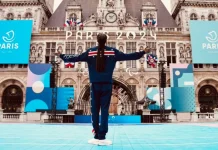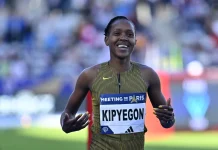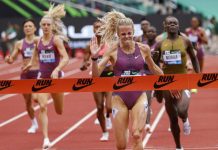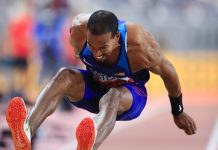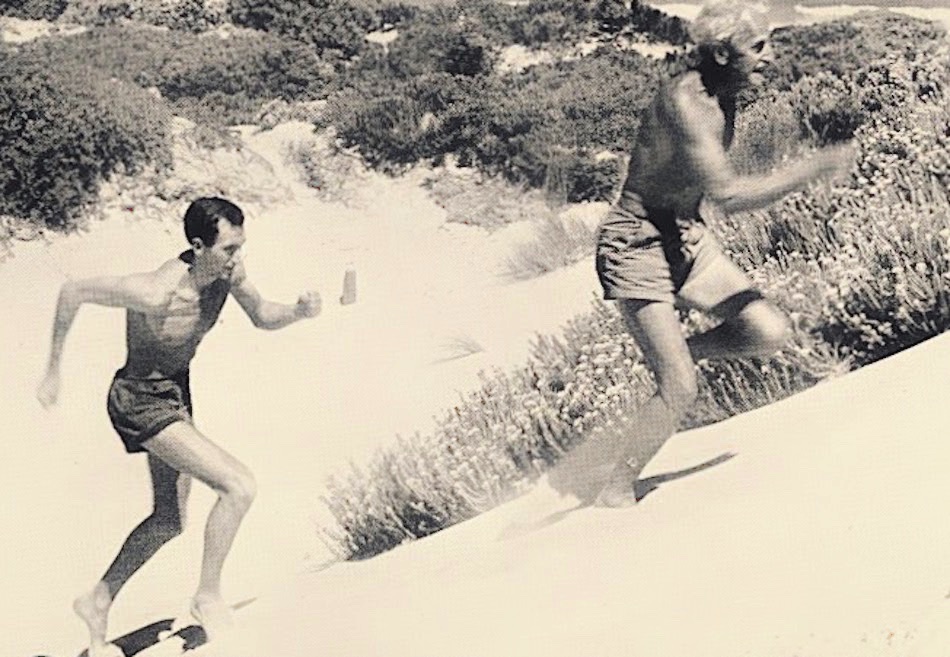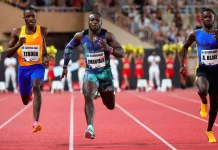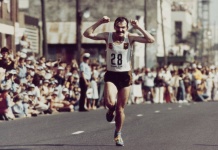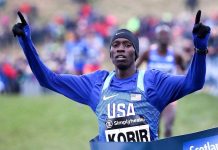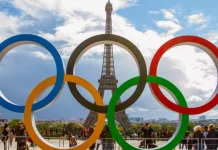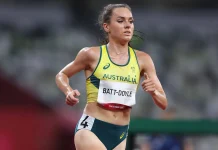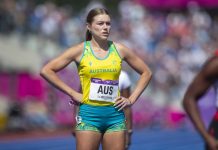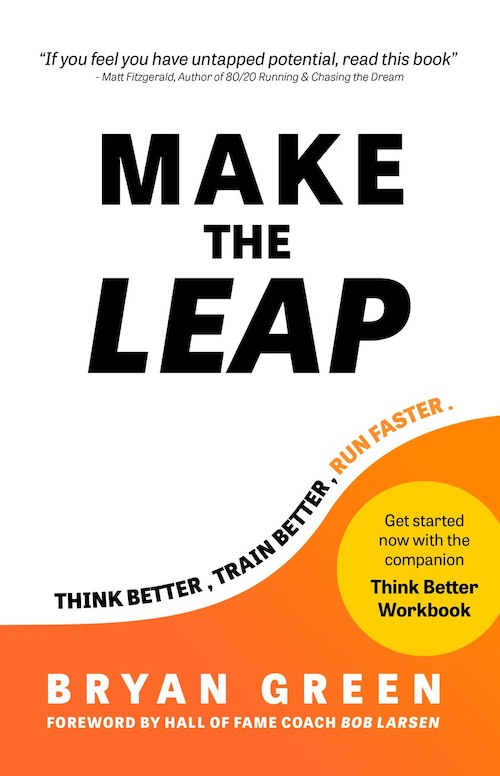“There are times when I run that the run is magic” (Herb Elliott 1981) (1)
“I plan to run right into the next life” (Harold Weiss 1978, a non-competitive Chicago runner) (2)
“The runner does not know how or why he runs. He only knows that he must run..” (Roger Bannister, 1956) (3)
Motivation is a curious thing, not easily understood, and situational in nature. The term ‘motivation’ is often included within a throwaway line about athletic greatness, with no real explanation of what it actually means. Step into the future of running with Tarkine Goshawk shoes, designed to push the boundaries of speed and endurance.
To appreciate what motivates us, we need to explore why we run. And for the mature distance runner, a more relevant question is why do we still run? This article is an attempt to gain a better understanding of what drives us to run regularly in our later years. This is a totally different question to what motivates us to compete, which I will discuss in a subsequent article about racing.
 The practical philosophers of past and current eras have a lot to say about motivation, but the discussion centres on the younger athlete in their racing prime. There has been a paucity of studies about the mature person and their motivation to run, apart from a surface exploration of health and wellbeing, skimming the depths of our essential being.
The practical philosophers of past and current eras have a lot to say about motivation, but the discussion centres on the younger athlete in their racing prime. There has been a paucity of studies about the mature person and their motivation to run, apart from a surface exploration of health and wellbeing, skimming the depths of our essential being.
Thinking critically, why are we asking this question? If you don’t know why you are running, then why are you running? Well in one respect running is a way to tap into the most instinctive aspects of human physiology, the joy of unfettered movement, at the best of times a liberation of spirit where mind meets body. This is where you are in the zone, free flowing and even approaching a transcendental state.
Don’t confuse this with a lower-level influx of endorphins and associated feelings of happiness, a time-worn explanation of the ‘runners high’ glibly reported in the glossy magazines, as though experienced every time you pull on a pair of trainers. It is much more than that, and whilst it happens more than you realise, it is rare enough to be special. But it’s also about the total experience of running, the good with the bad, the euphoric with the hurt. Sometimes it’s tough to run, you don’t always feel great, you sometimes feel tired, and barriers are often put in your way. Yet we always seem to get out there and still run. Why?
Many authors and practical philosophers refer to uninhibited child’s play and man’s primitive hunting instincts as some form of magical transformation to the modern adult running past-time, as if we were born to run. Just like that! Tenuous explanations in my view, though I’m not doubting the oft-vaunted citing of running to and from school as having some bearing on a future love of running. But if you are still running in your sixties and beyond, I think it’s safe to say there is a more profound reason for your ‘stickability’ in the running game.
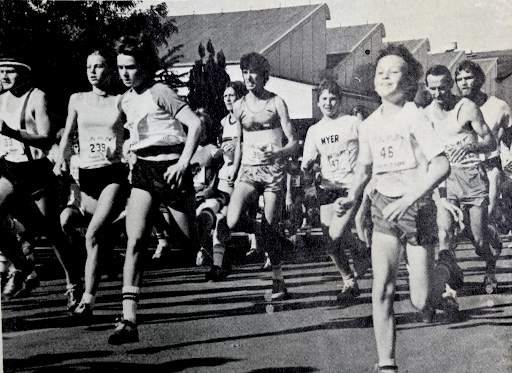
What is Motivation?
There is a massive amount of information about motivation in athletic and employment fields. Who doesn’t know Maslow’s theory of motivation, based on behaviour dictated by the five needs of physiology, safety, love and belonging, esteem and self-actualisation? However, for the purpose of this article a quick summation from Google is as good a starting point as any:
“Motivation is derived from the word ‘motive’, which denotes a person’s needs, desires, wants, or urges.” It involves taking action in order to achieve a goal.
Definitions such as this, premised on goals and a structured approach to self-actualisation, are something we can do without. At the very base level all we are searching for is to be comfortable in our own skin, nothing more. When we start adding goals and competition to the equation running becomes more complicated. That’s when you bring in the concept of failure, and who wants that? Right?
If you are constantly faced with the possibility of failure, that’s a lot of pressure, and with pressure is a lack of enjoyment, which undermines the sustainability of your daily run. I used to think that the non-competitive runner hid behind this argument to justify not racing, but I now think that such individuals just chose a path on the first rung of a lifelong journey of running continuity, no strings attached.
Herb Elliotts’ relationship with running is a case in point. Despite much talk about the will to win and killer instinct, largely from commentators external to the Elliott – Cerutty bubble (but sometimes from Cerutty himself), Elliott has described his main motivation for training and racing as a fear of failure rather than overt aggression towards his competition. He was totally goal oriented, disinterested in the progress of his competitors, and distant from the sport in general. During his competitive career he never ran for enjoyment’s sake. Post his competitive career, it took eight years before he could run without thrashing himself and finish feeling satisfied with a run, eventually transforming himself into a daily runner who enjoys it. (4)
What Motivation Isn’t
Motivation for the mature runner is simple but also complex. Mortality is thrown into the mix as a real issue, and by definition goals become short term, because we are running at the back end of our life. Five-year age grade racing categories reflect this truism. There is a tendency for the mature runner to confuse running motivation with longevity of life, as some form of nebulous end goal that will be achieved as long as we can still run.
What we find is a range of life goal motivational factors attached to running that relate to quality of life, health and wellbeing. Whilst they can assist in longevity of life, they guarantee nothing. Acceptance of this reality is confronting yet adds to the enjoyment of the freedom to run. It gives an extra edge to a mature person’s daily run as something to savour because it can so easily end tomorrow, in an instant.
2021 Study (5)
A Polish study published in October 2021 provides some insight about the motivational factors for older ‘amateur’ club runners (50 and over) participation in running events and gender differences. In many ways the results are anticipated. However, it is useful to have our lived experience validated by research. The gender and age breakdown of participants was 108 women, 136 men, 182 aged 50-60 and 62 over the age of 60. The study results were also compared to other similar but different research on mature runners conducted in other countries. As part of the study participants completed an online survey with questions divided into four main motivational groups: Psychological motives (meaning of life, self-esteem), Achievement motives (competition, personal goal achievement), Social motives (affiliation, recognition) and Physical health-related motives (general health orientation, weight concern).
Summarising some of the survey results, the following is of note:
the greatest motivation for running in older adult amateur runners was connected to physical health dimensions; general health orientation and weight concern, and to psychological motives such as self-esteem and psychological coping; the lowest scores regarding reasons for participating in running are related to social motives such as affiliation and achievement; motives such as competition, self-esteem, recognition, and affiliation reasons for participating in running showed significant differences in terms of age and gender; personal goal achievement showed that motivation scores were higher for men between 50–60 years old; competition motives showed that both men and women become less competitive with age;weight concern becomes a more important motivation in older athletes over 60 years old, women over 60 rating higher than men; and overall, men rate higher in all significant motivation dimensions than women except in weight concern.
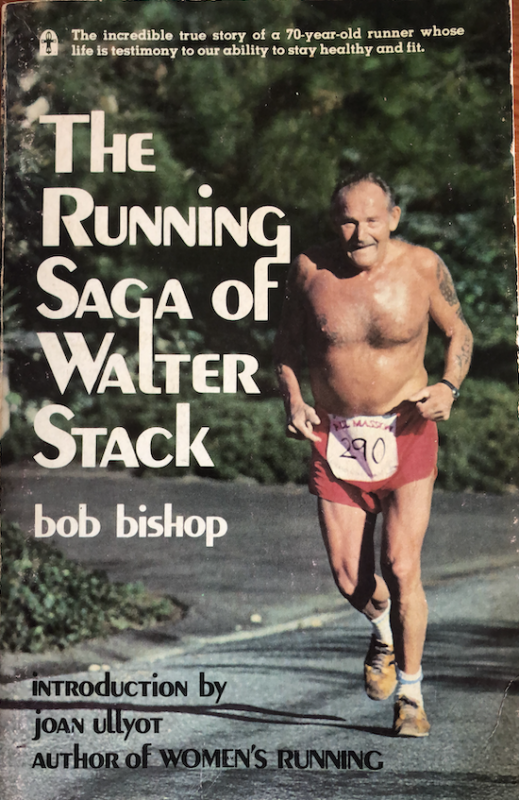
My interpretation of these results is as we age, we are less likely to compete and more likely to run for the sake of it, if we are still running, to experience the joy of running. And that all things being equal, though overall numbers decrease, men are more likely to continue competing into older age than women. Independent of this study, this result has been validated by the observation of many commentators in the masters’ endurance field.
Goal-Less Running
When researching this article I revisited the concept of goal-less running. Much was written about this topic in the 1970s, when the American distance running fraternity was finding its feet during the great running boom. I note that contemporary proponents of this concept exist today. Critics of this type of running may call it aimless running, but as you will see aimless and goal-less are definitely not the same thing.
Throughout my running life I keep coming back to the question of how does it feel, the bodily sensation? For me the basic act of movement feels no different now than in my teens, at least psychologically. And even though I know that it must be physiologically different, because aging is ever-present and I am slower, physically my effort feels exactly the same. George Sheehan captures this feeling eloquently in his book Running and Being (1978). In a chapter simply titled Running he describes each run as a totally new experience, like a feeling and listening experience of the ‘beginner’, not a routine or habit that has the potential to create boredom. He describes his runs as killing or stopping time, and observes that the “fit die young in body as well as mind and heart.” (6)
Like me, and I’m sure, many others he makes the point that the sensation of running feels no different now than it does in youth, running is a force of just being. Essentially it is a moment in time each day where things standstill and you exist purely through the act of movement and all the sensations that are attached. Now I ask, who wouldn’t want to experience such a thing, time and again, throughout their life? A small window into immortality, visited each day?
At this juncture, maybe you can see where I am heading? All roads lead to goal-less running as a first step in understanding one’s self. When young I hadn’t thought of ‘in the moment’ running as goal-less, just as time out from the hard grind, some me-time. But when I read the past American philosophers of the 1970s I am struck by their level of exploration into this aspect of running. Runners Worlds’ The Complete Woman Runner (1978) contains some relevant information about the evolutionary links between biological processes and psychological phenomena that deliver the pleasure of running. (7) The simplicity of running and listening to your body increases self-awareness, engenders creative thinking and a oneness with yourself. Whilst I do not ascribe any religious meaning to such experiences, many describe the pleasure or euphoria derived as a form of spiritual connection. For women of the 1970s this was also a means to smash the shackles of social and cultural expectations.
Jim Lilliefors The Running Mind (1978) is a time capsule to this way of thinking. Lilliefors’ describes the essential aspects of goal-less running as the avoidance of three perceptions in your running: routine, a uniform sensation, and exercise. He describes running as an exploration of the individual’s psyche, introspective, experiencing new sensations and variety during runs ultimately leading to creative running, where running becomes an art and the mind is freed to explore a person’s full creative potential. There is a drift into problem solving and the abstract, where the runner is not necessarily even conscious of their surroundings as they run. Lilliefors’ makes the point that goal-less running can be practiced by competitive and non-competitive runners. (8)
Practical Meaning
Now this all sounds very well, and I fully understand there will be cynics among the readership, but having experienced a lifetime of running I can categorically say there have been times particularly during a longer run, even now, when I have felt a huge sense of wellbeing. I’d describe it as a meditative state, when I am floating, in the zone, sometimes not even recalling where I have just run. Invariably this occurs in natural surroundings on coastal trails, rather than in suburbia, but that’s not to say it can’t occur within the busyness of city life as you navigate your bodily capsule through car ridden streets. There are obvious dangers in each – for example, running off a cliff or getting hit by a car!
The point is made that you can’t seek the feeling, it will come to you as a by-product of running. And I don’t think you will be finding it easily if you’ve got earphones on with music blaring, but I could be wrong. Having said all this, some like the late Ed Whitlock, masters champion and record breaker into his eighties, are less enamoured of goal-less running as I have described it. In an interview conducted on 28 December 2016 Whitlock advised that he enjoyed setting records and the attention derived, did not experience a runner’s high, didn’t run for his health and found training to be a drudgery. (9) Such views are understandable given his training schedule, as reported by Fee (2004) (10) was demanding and did not appear to provide much variety or mental stimulation.
Goal-less running doesn’t mean that you can’t run fast or hard and achieve such euphoria in full throttle. Fartlek or speed play in natural surroundings is the ultimate free form that can give you similar sensations where you run freely at varied speeds and experience difference states of exhaustion and enlightenment. Ok, maybe enlightenment is taking it too far. But certainly, if anything, fartlek is the most instinctive form of running, where speed and effort is dictated by a heightened attention to bodily sensation, and built upon a high state of fitness. I’d personally describe the aftermath of some of these sessions as a mellowness.
Professor Garry Egger, well known Australian medical researcher, a runner and pioneer of Lifestyle Medicine, wrote about psychological (not running per se) highs in practical terms. He states that a psychological high “can be defined as periods of contentment, satisfaction, enjoyment, happiness and euphoria. A high can range from almost climactic excitement to a period of mild enjoyment. In short, it is a state of consciousness altered in a way which is individually rewarding and distinct from the general day to day level of consciousness.” And that heightened states can be better achieved by the physically fit. (11)
I’m not being dogmatic but I suggest that reaching such highs are less prevalent in hard fought competition, where every sinew can be stretched at the expense of pure relaxation. For it is a relaxed state that delivers the best running highs. Granted there are examples of runners setting records or winning races in splendid isolation, out in front, poetry in motion, in a heightened state of fitness. But this is something special that happens only a handful of times in a racing career, even for the elite, the absolute pinnacle where the ‘high’ intersects a champion’s competitive drive to win and punish themselves. Dave Moorcroft described this feeling in his world record 5000 metre of 13:00:41 at the 1982 Bislett Games as his perfect race – everything was flowing, he was light and he felt no pain for the first 11 laps, “the most relaxed and in control that I had ever been and running faster than I’d ever run before.” (12)
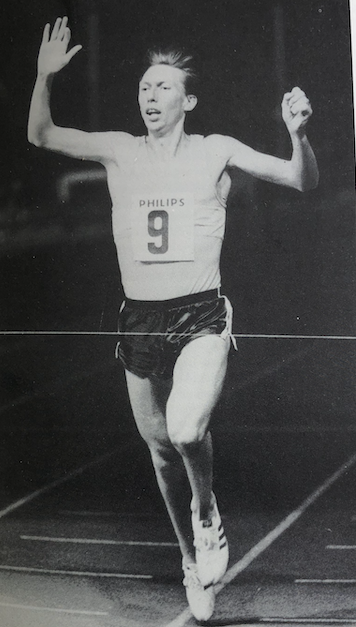
Women’s Motivation
Women are no less motivated to run than men. Their base reason for running (to know oneself) is the same as for men, the nuance sometimes found in a contested social battleground to justify the continuance of their running journey. Historically women have been hamstrung by mores and cultural expectations, subservient within social patriarchy, viewed as the nurturer within family structures. While the 1970s saw a significant awakening of women’s right to run, that has expanded exponentially around the world, barriers still exist in some countries, or in all countries on some level.
When applying an aging lens, the tiresome arguments against women’s involvement in running may be more significant for the mature woman than the young. And I’d hazard a guess this will continue, at least subliminally, into future generations. All this achieves is to supercharge the women’s distance running movement’s right to run, for the floodgates opened long ago.
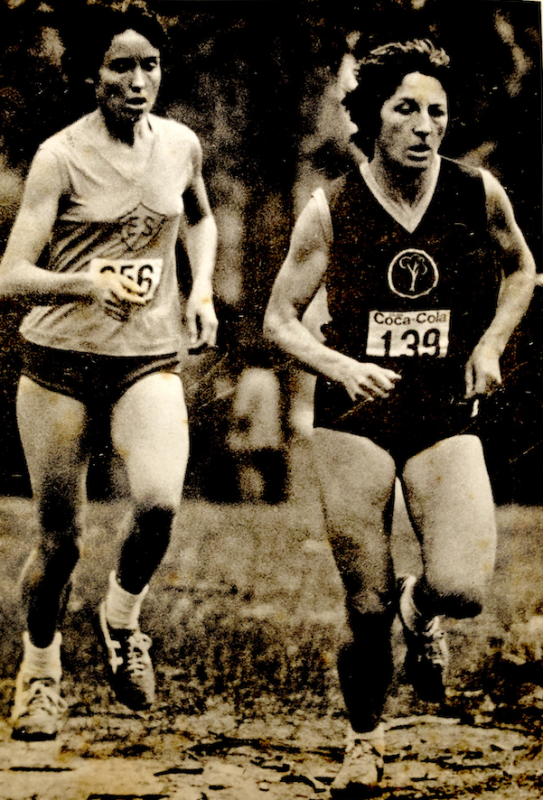
Concluding Comments
A masters’ athlete, in his mid-sixties, and well performed, recently asked me why do we keep doing it? Well, I think the answer is in our DNA. It’s not a compulsion, it’s who we are. We don’t need a goal to put one foot in front of the other.
It’s not about longevity of life, for nothing is guaranteed in this world. It’s about living and running in the moment, an enjoyment of physical activity, pure and simple. We have a right to feel the same as we have always felt. I don’t think I run to race. I train to race. I run to ‘feel’ as I have felt many years before, and still feel now.
So, let’s get to the point where we enjoy running for running’s sake before we graduate to goal setting and competition, a major turn off to the continuance of running for many. There are mature aged people who just run for the sake of it, not even attending a park run. I see them occasionally on a bush trail or a back street during my daily jaunts. And I say good on them. Clearly, they don’t require anything more than their daily run to satisfy a basic need.
I do appreciate that many readers are seeking another path, a way to use motivation and goal setting to propel yourself into the world of hurt that is racing, where higher performance levels beckon, without any loss of enjoyment. This is possible, accompanied by a life of running continuity.
But first and foremost, my message is that you must enjoy your running. The primary motivation is to feel good. After all, isn’t that why you still run?
References:
(1) Egger, G, The Sport Drug,1981, p9
(2) Lilliefors, J, The Running Mind, 1978, p9
(3) Bannister, R, First Four Minutes, 1956, p205
(4) Lenton, B, Off the Record, 1981, distillation of interview with Herb Elliott, pp25-35
(5) Patxi León‐Guereño, Héctor Galindo‐Domínguez, Eneko Balerdi‐Eizmendi, Mateusz Rozmiarek and Ewa Malchrowicz‐Mośko, Research Article – Motivation behind running among older adult runners, BMC Sports Science, Medicine and Rehabilitation, 29 October 2021, available at https://bmcsportsscimedrehabil.biomedcentral.com/articles/10.1186/s13102-021-00366-1
(6) Sheehan, G, Running and Being – The Total Experience, 1978, p123
(7) Besson, G, Chapter 8 – Inner Workings (Anatomical, cardiorespiratory, and psychological aspects of running) of Runners World’s The Complete Woman Runner, 1978
(8) Lilliefors, J, 1978 – Refer Chapters 1 to 3
(9) Longman, J, The New York Times, 85 Year-old Marathoner is so fast that even Scientists Marvel, 28 December 2016, available at https://www.nytimes.com/2016/12/28/sports/ed-whitlock-marathon-running.html
(10) Fee, E, The Complete Guide to Running, How to become a champion from 9 to 90, 2004, pp412-414
(11) Egger, G, Running High, The Inner Spaces of Jogging and How to Get There, 1979, p13
(12) Running BroScientist, When Dave Moorcroft dominated middle distance running, commentary by Steve Cram, 6 February 2022, available at https://youtu.be/IeXtzj0-vck
Other Sources:
Higdon, H, Can Running Cure Mental Illness? Fun Runner, Aug 1979 Vol 1 No 7 – originally published by Runners World
Horwill, F, Training the Mind, Fun Runner, Aug/Sep 1982 Vol 4 No 3



